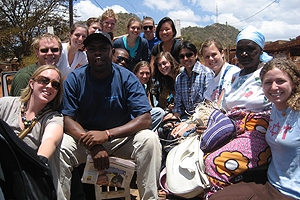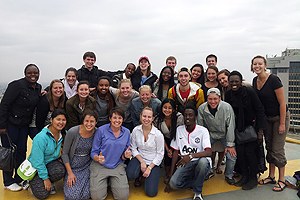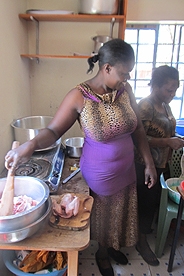About Kenya

Kenya is one of the most diverse countries in Africa. Its geography extends from the warm coastal waters of the Indian Ocean to volcanic mountains in the Great Rift Valley to the highlands near the largest freshwater lake on the continent. Many languages, religions, and cultural traditions converge in Kenya making it a dynamic and vibrant place to visit and experience.
Discover Kenyan Culture
Languages

‘Jambo’, is what you are most likely to hear if you look like a foreigner. Down the road, however, after you get a grasp of Kiswahili, you will discover the proper greetings ‘Hujambo,’ or ‘Hamjambo’ if there are more of you. Or a host of other greetings, some slang, depending on what part of Nairobi or Kenya you are in and who you are hanging out with. That is the dynamism of Kiswahili language. And Kiswahili is only one of the few dozen languages spoken in Kenya. Forty-two is the official number. More if you take dialects into account. One language alone, Luhya, is constituted by sixteen dialects. Yet, despite having these many languages, a foreigner can get around Kenya with relative ease by speaking English, or Kiswahili.

But, not quite so easily… the average Kenyan with a high school education speaks at least three languages; English, Kiswahili, and their mother tongue. Frequently, and unconsciously, many people use all the three languages simultaneously in a conversation. A sentence would start in English and down the road, wanders off into some other language before finding its way back to English. Or not. Do not be surprised if a conversation you thought you are a part of winds up in another language. You will understand if you speak more than one language, that sometimes it is a lot easier for people to express particular concepts in one language better than another. Often too, folks speaking English fluently would use non-English affixes and words in a conversation. This might happen in a formal conversation as well, like briefing sessions in your internship, lectures during field trips, and classes you may be taking in our partner institutions.

American English is only one of the versions spoken around the world. You will attune your ear to the version spoken here. Kenyan public schools are taught in the British version of English. Infuse that with influence of local languages and you have a version of Kenyan English that takes good listening to understand. Be cognitive of the fact you too speak with an accent that may not be familiar. On the same token, Kenyan English, as with American or any other version spoken around the world, has culture-specific expressions and dictum. When you make an acquaintance with a Kenyan, and exchange phone numbers, you will likely be asked to 'flash' them, meaning, call their phone to confirm you have the correct number. You are best served asking for clarification rather than making assumption. It is all a part of the experience.
Food

In Nairobi there are many local and international supermarkets.

Common Foods in Nairobi

Nyama choma - (grilled meat in Swahili) Kenyan staple; grilled meats (such as beef, goat, and lamb) are most common choices, usually eaten with hands and every bite dipped in a bit of salt.
Kachumbari - Kenyan version of salsa. Tomatoes and onions, and possibly garlic, carrots, and spicy pepper. Typically a side dish with ugali, sukuma wiki, and nyama choma.

Chapati - Similar to a thick tortilla, made with flour and oil, pan fried and best eaten hot.
Chai - Kenyan style tea, made with black tea leaves, whole fat milk, and sugar (sukari).
Mandazi - Similar to a donut, typically eaten with a cup of hot chai.
Chips - French fries.
Masala chips - French fries coated with masala spices.
Maize - Street food; unsweetened corn roasted over hot coals, most commonly served with chili lime salt.
Pilau - Indian origins; rice, typically with goat meat, with lots of spices that might include cumin, cardamom, cinnamon, and cloves.

Fresh Fruit – bananas, mangos, passion fruit, papayas and pineapples are plentiful.
Irio – Kikuyu staple; mashed peas and potato mixed together with maize.
Githeri – Kikuyu staple; cooked beans and corn mixed together.
Sukuma Wiki – (push the week in Swahili) Kenyan staple; Sauteed greens with onions and garlic. Commonly eaten with ugali and meat if available.
Ugali – Kenyan staple; made with corn meal and boiling water, often eaten with another dish such as sukuma wiki, nyama choma, or another vegetable or meat.

In Nairobi there are many kiosks (roadside stands) where local people sell fruits, vegetables, and legumes on the street that are grown within the region.
